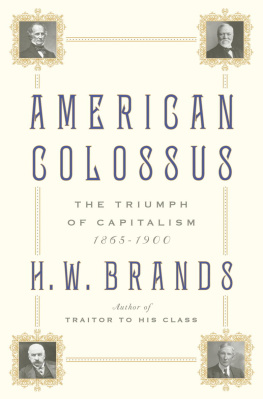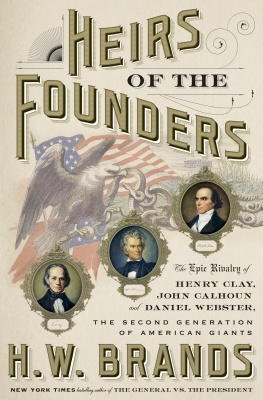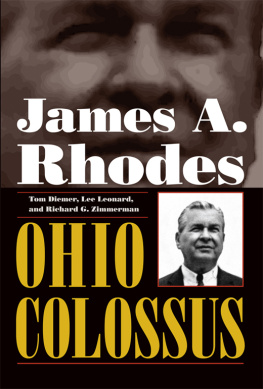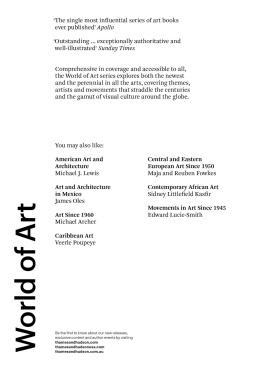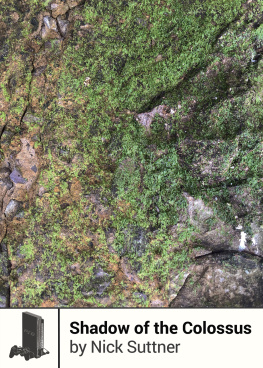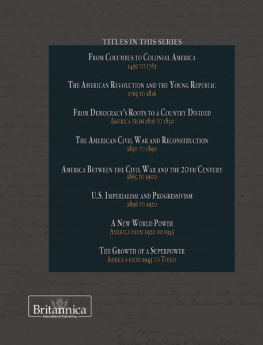H.W. Brands - American Colossus: The Triumph of Capitalism, 1865-1900
Here you can read online H.W. Brands - American Colossus: The Triumph of Capitalism, 1865-1900 full text of the book (entire story) in english for free. Download pdf and epub, get meaning, cover and reviews about this ebook. year: 2010, publisher: Doubleday, genre: Science. Description of the work, (preface) as well as reviews are available. Best literature library LitArk.com created for fans of good reading and offers a wide selection of genres:
Romance novel
Science fiction
Adventure
Detective
Science
History
Home and family
Prose
Art
Politics
Computer
Non-fiction
Religion
Business
Children
Humor
Choose a favorite category and find really read worthwhile books. Enjoy immersion in the world of imagination, feel the emotions of the characters or learn something new for yourself, make an fascinating discovery.
American Colossus: The Triumph of Capitalism, 1865-1900: summary, description and annotation
We offer to read an annotation, description, summary or preface (depends on what the author of the book "American Colossus: The Triumph of Capitalism, 1865-1900" wrote himself). If you haven't found the necessary information about the book — write in the comments, we will try to find it.
American Colossus: The Triumph of Capitalism, 1865-1900 — read online for free the complete book (whole text) full work
Below is the text of the book, divided by pages. System saving the place of the last page read, allows you to conveniently read the book "American Colossus: The Triumph of Capitalism, 1865-1900" online for free, without having to search again every time where you left off. Put a bookmark, and you can go to the page where you finished reading at any time.
Font size:
Interval:
Bookmark:

The author would like to thank the many people who made this book possible. David M. Kennedy suggested the project and provided valuable critiques of various drafts, although the project ultimately took a turn neither of us expected. Eric Foner and Richard White likewise read early drafts and offered insightful comments. My colleagues and students at Texas A&M University and the University of Texas at Austin have let me test my thinking on them for years, and have happily informed me when my evidence or logic has fallen short. Roger Scholl, Bill Thomas, and Kristine Puopolo at Doubleday and James D. Hornfischer of Hornfischer Literary Management have been consummate professionals throughout. Roslyn Schloss remains the queen of copy editors.
ALSO BY H. W. BRANDS
The Reckless Decade
T. R.
The First American
The Age of Gold
Lone Star Nation
Andrew Jackson
Traitor to His Class
H. W. Brands is the Dickson Allen Anderson Professor of History at the University of Texas at Austin and the author of numerous works on American history. He has twice been a Pulitzer Prize finalist, for The First American, a biography of Benjamin Franklin, and for Traitor to His Class, a biography of Franklin D. Roosevelt.
SPECULATION AS MARTIAL ART
T he capitalist revolution was a matter of technique and technology. The techniques that carried the capitalists to power in the final third of the nineteenth century grew out of the methods of the merchant entrepreneurs of the eighteenth century, men like John Jacob Astor, who got his business start selling musical instruments, graduated to furs, added tea and other addictive luxuries (including opium), and topped out in real estate. The secrets of Astors success included his acquisitive nature, his eye for a bargain (and a wife whose eye was even better than his), and the networks of buying and selling that brought his suppliers to him and him to his customers. And yet, as he was happy to admit, the most powerful secret was the one that was least secret of all: the rapid and relentless expansion of the American population, which drove property values ever upward. Shortly before his death in 1848 he was asked what he would do differently, if he could live his life over. Could I begin life again, he answered, knowing what I now know, and had money to invest, I would buy every foot of land on the island of Manhattan.
There were other secrets of American success that, like the growth of the American population, were available to Astor imitators by the middle of the nineteenth century. The legal system of the country, adapted from the system of the English common law, secured property from arbitrary seizure by government. The financial system of the country, based on hundreds of competing state banks but no central bank (after Andrew Jackson killed the second Bank of the United States), promoted rapid economic growth, albeit at the cost of recurrent instability. The financial panic of 1837 followed Jackson from office; the panic of 1857 unnerved a country already on edge regarding slavery.
Underlying the benefits and costs of finance was the question of money. The federal government issued specie currency: gold and silver coins. But since colonial times specie had never sufficed to keep the economy moving at the pace Americans demanded, and so they turned to paper. Banks printed notes, which circulated at par (face value) near the point of issue but were discounted, for the trouble and uncertainty of redemption, the farther they traveled. The notes were convenient, but because they werent legal tender (no one was required to accept them in payment of debts) they were no stronger than the issuing banks, which often collapsed in the recurrent panics. The discovery of gold in California in 1848 alleviated the strain on the paper system by increasing the supply of gold (it was estimated that more gold was dug from the earth in the quarter century after 1848 than in the previous 350 years), but it didnt end the demand for paper.
In fact, the demand for paper grewenormouslyduring the Civil War, when both sides issued paper notes by the hundreds of millions of dollars. No one took the Confederate currency seriously, which was why the Confederate government had to keep printing more of the stuff, touching off a ruinous inflation. The Union currencyprinted in green ink, and so dubbed greenbackswas more persuasive, but only because it was supported by series of draconian fiscal innovations. The Legal Tender Act required debtors to accept the greenbacks (an exception being the Union government itself, which insisted on hard money). The National Bank Act barred state banks from issuing notes, thus giving the government a monopoly on paper. And the Internal Revenue Act imposed a federal income tax and other levies that assured the federal government a reliable source of revenue, thereby easing the pressure to print more greenbacks.
The wartime measures diminished the anarchy in the money system, but considerable uncertainty remained. The constitutionality of the Republican financial program was open to serious question. The Constitution said the federal government can coin money. Did that mean it could print money as well? Did the proscription against state bank notes follow from the commerce clause, from the elastic clause, or from Treasury secretary Salmon P. Chases imagination? As for the income tax, that seemed a patent violation of the constitutional ban on direct taxes not proportioned to population.
Until the courts settled the constitutional questions, the postwar financial markets faced the problem of accommodating the dual money system. Gold dollars and greenbacks competed directly with each other for the affections of merchants and investors, and indirectly for the affections of everyone else. The greenbacks drove gold from domestic circulation (why pay a debt with expensive gold when cheaper greenbacks would do?), but gold was still required for international transactions (American legal tender rules didnt apply abroad) and for payments to the government. The relative prices of the two currencies fluctuated according to the laws of supply and demand, and the fluctuating attracted speculators, who tried to anticipate the direction of the market. From anticipation to manipulation was a short, tempting step.
Gold transactions took place in a special room in the neighborhood of lower Manhattan that had become the financial hub of the country. In colonial days Boston had been the center of finance, followed by Philadelphia in the early national period. But New Yorks central location, its unsurpassed harbor, and the ambitions of the heirs of its Dutch founders made it a worthy rival to its northern and southern neighbors. New Yorks traders organized themselves on Wall Street in the 1790s, gathering under a buttonwood tree to forge an agreement establishing rules for buying and selling bonds and shares of companies. The traders eventually moved indoors, gaining credibility with the growth of the citys economy, especially after the opening of the Erie Canal in 1825. The demise of the Philadelphia-based Bank of the United States (at the hands of Andrew Jackson) crippled New Yorks primary rival, and by the time California gold began flowing east, New York was the clear leader in American finance. The energy of its brokers, most notably Jay Cooke, in selling Union bonds during the Civil War, cemented its primacy.
By that time New Yorks reputation and reach were international. London and Paris still did more financial business than New York, but the comparative maturity of the European economies caused bold investors to look to developing countries for higher returns. Of the developing countries, the United States appeared the most promising. The rate of return on investments in American railroads and telegraphs, for instance, outstripped that on most investments in Europe. Americas periodic panics were disconcerting, but the revolutions and civil wars in Latin America and the mutinies and insurgencies in India and other parts of Asia made the United States seem quite stable in comparison with those areas. And after the revolutions that rocked Europe in 1848, it seemed more stable than several countries much closer to home. The American Civil War briefly frightened fainthearts among European investors, but long before Appomattox sealed the Union victory, the international investors had written off the Confederacy and were writing American securities back into their portfolios.
Font size:
Interval:
Bookmark:
Similar books «American Colossus: The Triumph of Capitalism, 1865-1900»
Look at similar books to American Colossus: The Triumph of Capitalism, 1865-1900. We have selected literature similar in name and meaning in the hope of providing readers with more options to find new, interesting, not yet read works.
Discussion, reviews of the book American Colossus: The Triumph of Capitalism, 1865-1900 and just readers' own opinions. Leave your comments, write what you think about the work, its meaning or the main characters. Specify what exactly you liked and what you didn't like, and why you think so.

